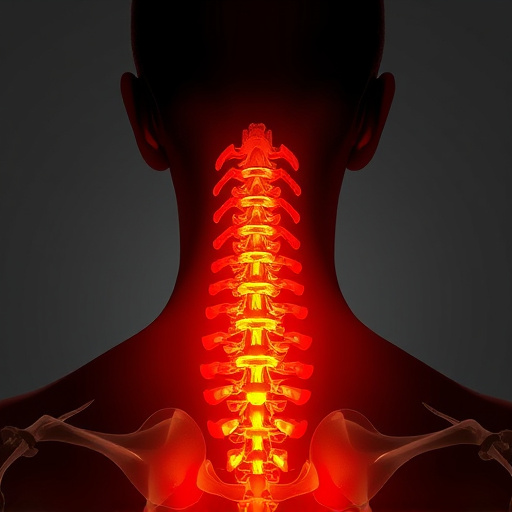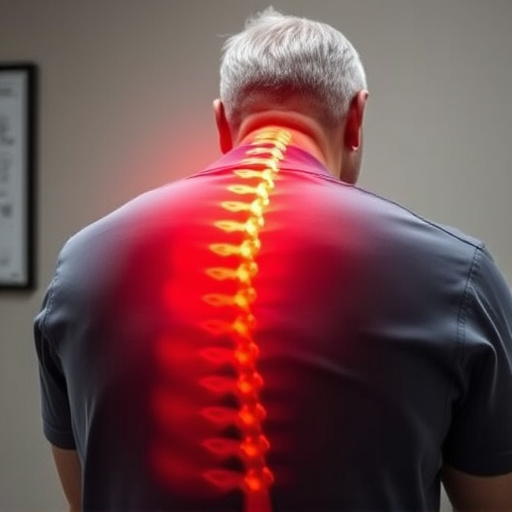Government worker injury documentation for neck and back pain relief is a stringent process that includes immediate recording of incidents, medical evaluations, and progress notes. Common causes include occupational hazards like prolonged sitting/standing, heavy lifting, and awkward postures. Accurate documentation involves comprehensive medical records, witness statements, and evidence detailing the extent of harm and treatment plans. Initial assessments, medical examinations, and detailed documentation are crucial for claim validity and ensuring workers receive appropriate neck and back pain relief. Prompt reporting and professional guidance expedite the compensation process, aiding in faster recovery. Comprehensive record-keeping strengthens claims and facilitates effective treatment planning.
In the realm of government employee welfare, understanding injury documentation is paramount. This comprehensive guide delves into the intricacies of documenting neck and back pain injuries, a prevalent concern among public servants. We explore common causes, emphasizing the critical role of accurate records for successful compensation claims. From legal considerations to strategic relief methods, this article provides a step-by-step approach to navigating the process effectively, ensuring folks receive the necessary neck and back pain relief they deserve.
- Understanding Government Worker Injury Documentation: A Comprehensive Guide
- Common Causes of Neck and Back Pain Among Government Employees
- The Importance of Accurate Documentation for Injury Claims
- Step-by-Step Process: Documenting Neck and Back Pain Injuries
- Legal Considerations and Timeframes for Government Worker Compensation
- Strategies for Obtaining Effective Neck and Back Pain Relief Through Documentation
Understanding Government Worker Injury Documentation: A Comprehensive Guide

Government worker injury documentation is a critical process designed to ensure proper care, compensation, and support for employees who sustain injuries on the job. This comprehensive guide delves into the intricacies of documenting such incidents, especially focusing on common issues like neck and back pain relief. It’s essential to understand that these records serve as a legal framework, guiding claims processes and facilitating fair resolutions.
When an injury occurs, immediate and thorough documentation is key. This includes detailed reports from witnesses, medical evaluations with diagnoses, and progress notes tracking treatment and recovery. For neck and back pain relief, specific attention should be given to describing the nature of the injury, associated symptoms, and the effectiveness of prescribed treatments. Accurate, timely, and comprehensive documentation not only facilitates efficient claims processing but also ensures that injured workers receive the necessary support for their recovery and return to work.
Common Causes of Neck and Back Pain Among Government Employees

Neck and back pain is a prevalent issue among government employees, often stemming from various occupational hazards unique to their roles. Prolonged periods of sitting or standing in one position, heavy lifting, repetitive tasks, and awkward posture are common causes. For instance, civil servants dealing with extensive paperwork may experience strain on their necks and upper backs due to sustained flexion and poor ergonomic setups. Similarly, employees engaged in physical labor, like construction or maintenance work, are at risk of neck and back injuries due to lifting heavy objects, sudden movements, or poorly designed workstations.
These workplace activities can lead to muscle strains, spasms, herniated discs, and other conditions requiring prompt attention for effective neck and back pain relief. Proper training on ergonomic principles, regular breaks, and access to comfortable equipment are essential preventive measures that government agencies should implement to safeguard their employees’ well-being.
The Importance of Accurate Documentation for Injury Claims

Accurate documentation plays a pivotal role in government worker injury claims, ensuring fair compensation and effective resolution. When a public servant sustains injuries, whether due to workplace accidents or repetitive stress, detailed and precise records are essential for supporting their claims for neck and back pain relief. This includes comprehensive medical reports, witness statements, and any evidence related to the incident.
Injury documentation should capture the extent of the harm, including symptoms, diagnostic tests, treatment plans, and expected recovery time. Thorough documentation helps in evaluating the severity of the injury, which is crucial for determining appropriate neck and back pain relief. It also facilitates a clear understanding of the causal link between the work-related incident and the resulting injuries, strengthening the claim’s validity.
Step-by-Step Process: Documenting Neck and Back Pain Injuries

When documenting neck and back pain injuries for government worker claims, a meticulous process ensures accurate representation and efficient support for compensation. Here’s a step-by-step guide to navigating this crucial aspect:
1. Initial Assessment: Upon receiving a report of neck or back pain, conduct a thorough initial evaluation. Record the details of the incident leading to the injury, including dates, times, and descriptions of symptoms experienced. This step is vital for understanding the injury’s origin.
2. Medical Examination: Arrange for a comprehensive medical examination by qualified healthcare professionals. Encourage the worker to discuss all relevant symptoms, including pain intensity, duration, and any specific activities that aggravate or alleviate discomfort. This examination should include imaging tests (X-rays, MRI) if necessary to assess the extent of damage, focusing on vertebrae, discs, and surrounding structures for accurate diagnosis.
3. Documentation: Create detailed documentation based on medical findings. Record all diagnoses, treatment plans, prescribed medications, and recommendations for physical therapy or ergonomic adjustments. Specific notes about neck and back pain relief methods and their effectiveness should be included to support the worker’s recovery progress.
Legal Considerations and Timeframes for Government Worker Compensation

When a government worker suffers an injury, there are specific legal considerations and timeframes that govern their compensation process. These regulations ensure fair and timely support for employees who experience neck or back pain relief issues on the job. The first step involves reporting the injury to the relevant authorities within a specified timeframe—usually within 24 hours of the incident. This prompt action triggers an investigation, which includes gathering medical evidence and documenting the circumstances surrounding the injury.
The compensation process can be complex, with various factors influencing the timeline. Legal experts recommend that government workers affected by neck or back pain relief seek professional assistance to navigate these complexities. Timeframes for approval and payment of benefits vary based on the severity of the injury, existing policies, and individual circumstances. Prompt attention to these legal considerations is vital to ensure a smooth recovery process and access to necessary medical care.
Strategies for Obtaining Effective Neck and Back Pain Relief Through Documentation

Experienced government workers often face challenges in documenting neck and back pain injuries, which can hinder their path to effective relief. To navigate this process successfully, they should prioritize thorough documentation from the onset. This includes detailing the injury’s onset, its impact on daily activities, and any medical treatments received. Comprehensive records of these aspects can significantly strengthen a claim for compensation and facilitate faster access to suitable neck and back pain relief.
Additionally, workers should maintain a log of symptoms, including their intensity and frequency, as well as any factors that aggravate or alleviate the pain. This information can provide valuable context during medical assessments and aid in developing an appropriate treatment plan. By combining detailed records with proactive communication with healthcare providers, injured government workers can ensure their claims are accurately represented and increase their chances of receiving timely and effective neck and back pain relief.














